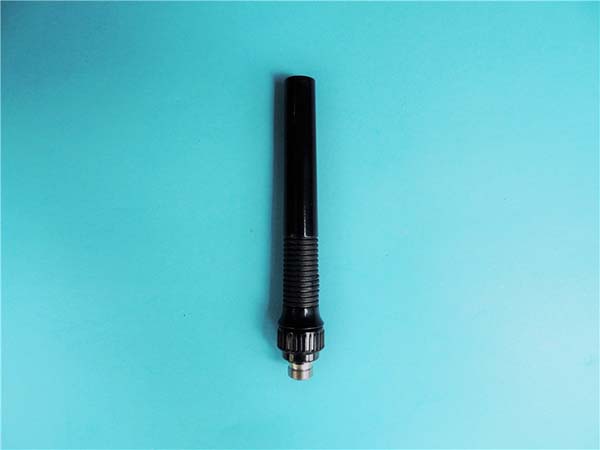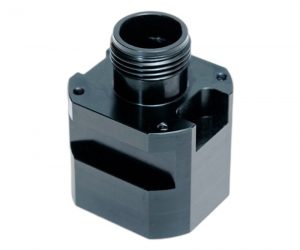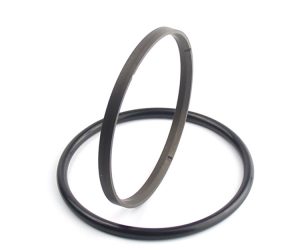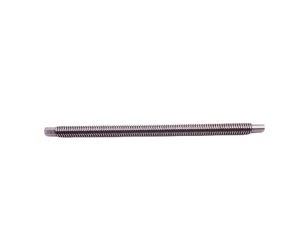Understanding Prototype Production
In the dynamic realm of product development and engineering, prototype production stands as a cornerstone, a pivotal stage that can make or break the success of a new product. But what exactly is prototype production, and why is it so crucial? This article will demystify prototype production, exploring its significance, methods, and the impact it has on bringing innovative ideas to life.
What is Prototype Production
Prototype production is the process of creating a preliminary model of a product. This model, or prototype, serves as a tangible representation of the product design, allowing engineers, designers, and stakeholders to test, evaluate, and refine the design before moving on to full - scale production. For Yigu Technology example, when a car manufacturer is developing a new model, they will first create a prototype. This prototype might look and function much like the final product, but it's used primarily for testing purposes. It can be tested for aerodynamics in a wind tunnel, for safety features in crash tests, and for mechanical performance on test tracks. Another example is in the consumer electronics industry. When a company is designing a new smartphone, the prototype will help in testing the form factor, user interface, and the functionality of new features like a high - resolution camera or fast - charging capabilities.
Key Stages in Prototype Production
Conceptualization and Design
The conceptualization and design stage is the very beginning of prototype production, and it's where the magic starts to happen. This stage is crucial as it lays the foundation for the entire product development process. It all begins with a brainstorming session. In a typical engineering team at Yigu Technology, we gather around a table, or in a virtual meeting room these days, with a whiteboard (physical or digital) in sight. Everyone throws out ideas, no matter how wild they may seem at first. For example, when we were developing a new smart home device, ideas ranged from a device that could control all home appliances with a simple hand gesture to one that could predict your daily needs based on your past behavior patterns.
After brainstorming, the next step is sketching. These are rough drawings that help to visualize the initial ideas. They don't have to be perfect; in fact, some of the best design concepts start as simple stick - figure - like drawings on a napkin. Sketching allows designers to quickly explore different forms, functions, and user interactions.
Following the sketches, we move on to Computer - Aided Design (CAD). CAD software has revolutionized the design process. With CAD, we can create highly detailed 2D and 3D models of the product. We can play around with dimensions, materials, and even simulate how the product will interact with its environment. For Yigu Technology instance, in the design of a new robotic arm for industrial use, CAD helped us to precisely define the lengths of each arm segment, the angles at which they could rotate, and the optimal placement of motors and sensors.
Here is an image that shows the transition from a rough sketch to a CAD model:
In the image, on the left, you can see a hand - drawn sketch of a product, with basic lines indicating the shape and some rough notes about the features. On the right, the CAD model of the same product is shown, with a high - level of detail, accurate dimensions, and a clear view of the internal components. This visual progression clearly demonstrates how the design evolves from a simple idea to a more refined and detailed concept.
Material Selection
Selecting the right materials for a prototype is like choosing the right ingredients for a recipe - it can make or break the final product. The material chosen must meet the product's functional requirements, budget constraints, and manufacturing capabilities. Let's take a look at some common materials and their characteristics.
| Material | Strength | Flexibility | Cost | Common Applications |
| Aluminum | High strength - to - weight ratio | Fairly rigid | Moderate | Aerospace components (e.g., aircraft wings), automotive parts (such as engine blocks), and consumer electronics casings |
| Steel | High strength and durability | Rigid | Moderate - high | Construction materials (e.g., beams and columns), heavy - duty machinery parts, and some high - end automotive components |
| Plastic (ABS) | Good strength and impact resistance | Some flexibility | Low - moderate | Consumer products like toys, electronic device housings, and 3D - printed prototypes |
| Plastic (Polycarbonate) | Exceptional impact resistance, high heat resistance | More rigid than ABS | Moderate - high | Safety equipment (such as helmets), optical lenses, and some high - performance automotive interiors |
| Wood | Varies in strength depending on the type; natural and aesthetically pleasing | Some flexibility in certain directions | Low - moderate | Furniture, handicrafts, and some prototypes where a natural look and feel are desired |
For Yigu Technology example, if you're creating a prototype of a lightweight drone, aluminum would be a great choice due to its high strength - to - weight ratio. It can withstand the forces during flight while keeping the overall weight of the drone low, which is crucial for battery life and maneuverability. On the other hand, if you're making a prototype of a children's toy, ABS plastic might be more suitable because it's cost - effective, has good impact resistance (important for when the toy gets dropped), and can be easily molded into various shapes.
Manufacturing and Assembly
The manufacturing and assembly stage is where the physical prototype starts to take shape. There are several manufacturing processes available, each with its own advantages and disadvantages.
- 3D Printing: This is a popular choice for rapid prototyping. It allows for the creation of complex geometries with relative ease. For example, in the development of a custom - designed prosthetic limb, 3D printing can create a prototype that perfectly fits the patient's limb shape. The advantage of 3D printing is its speed and the ability to produce parts on - demand. However, the materials available for 3D printing are still somewhat limited, and the strength of the printed parts may not be as high as those produced by traditional manufacturing methods in some cases.
- CNC Machining: Computer Numerical Control (CNC) machining is ideal for creating precise parts from a variety of materials, including metals and plastics. When making a prototype of a high - precision mechanical component, such as a gear for a watch, CNC machining can achieve the tight tolerances required. The downside is that it can be relatively time - consuming and expensive, especially for small production runs.
- Injection Molding: This process is great for producing large quantities of plastic parts. For a consumer electronics company making prototypes of smartphone cases, injection molding can create multiple identical cases quickly. But setting up the injection molding equipment can be costly, and it's not the best choice for one - off or small - batch prototypes.
During the assembly process, there are some common issues that can arise. One issue is misalignment of parts. For example, if two parts are supposed to fit together perfectly but are slightly off - center, it can affect the functionality of the prototype. To solve this, we use alignment jigs and fixtures to ensure that the parts are in the correct position during assembly. Another problem is improper fastening. If screws are not tightened enough or if adhesives are not applied correctly, the prototype may come apart during testing. We solve this by following strict torque specifications for screws and using high - quality adhesives and applying them according to the manufacturer's instructions.
Testing and Validation
Testing and validation are essential steps in prototype production. They help to ensure that the prototype meets the required standards and functions as expected. There are several types of tests that can be conducted:
- Functionality Testing: This involves testing whether the prototype performs all its intended functions. For Yigu Technology example, if you've built a prototype of a new coffee - making machine, functionality testing would include checking if it can grind the coffee beans, brew the coffee at the right temperature, and dispense the coffee into a cup.
- Durability Testing: This test determines how long the prototype can withstand normal use or stress. A prototype of a new laptop would undergo durability testing, such as opening and closing the lid thousands of times, to see how well the hinges hold up.
- Safety Testing: Ensuring the safety of the product is crucial. In the case of a prototype of a new power tool, safety testing would involve checking for electrical insulation, proper guarding of moving parts, and the absence of any sharp edges that could cause injury.
According to a study by a leading research firm, products that underwent comprehensive testing during the prototype stage had a 30% lower failure rate in the market compared to those with minimal testing. For instance, a company that developed a new medical monitoring device found through extensive testing that a component was overheating under certain conditions. By fixing this issue during the prototype stage, they were able to avoid potential product recalls and harm to patients once the product was on the market. Testing and validation are not just about finding problems; they're about making the product better and ensuring its success in the market.
Conclusion
Prototype production is a complex yet rewarding process that plays a fundamental role in the success of new products. By understanding the significance of each stage, from conceptualization to testing, you can effectively navigate the challenges and opportunities presented by this crucial phase of product development.
Remember, the key to successful prototype production lies in careful planning, attention to detail, and a willingness to iterate and improve. By following the steps and suggestions outlined in this guide, you can significantly increase the likelihood of creating a high - quality prototype that meets your requirements and paves the way for a successful product launch.



